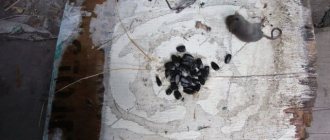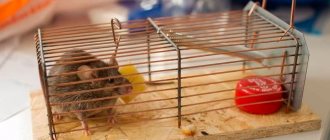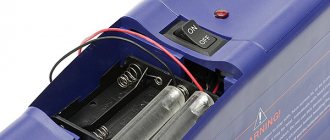When a rat appears in the house, the question always arises of how to get rid of it. There really are a lot of options, and often people still prefer mousetraps, traps and other devices that can quickly catch a rodent and kill it. But not a single rat will just go to certain death, because these animals are extremely smart, and in order for it to still fall into the trap, you need to try hard with the choice of bait. In this article you will learn what is the best way to catch rats, how to lure a rodent into a trap, what bait to use and much more.
Bread crust and sunflower oil
Sometimes the solution to a problem is so simple that one cannot believe in a positive result. Many people experiment with varieties of cheese and sausage, trying to lure pests into a trap. Meanwhile, rural residents have long identified the leader among mouse baits. They, like no one else, know what a mouse invasion is and how to fight it.
The mouse brethren are best caught on bread with a drop of sunflower oil. An important point is that the products must smell. It is recommended to use fresh white bread, or rather, its crust. Also, not any oil will do, but only unrefined sunflower oil. As an alternative, you can use refined oil after frying the meat.
Some people put food separately in the mousetrap - one bread or one butter. This can also be done, but then the effectiveness of the bait decreases.
Salo
Few city residents know that birds and rodents love to pamper themselves with tasty, aromatic lard. The fact is that they perfectly identify high-calorie foods that will keep you full for a long time and give you strength. But not any lard is suitable for them - they will probably bypass old, salted and bad-smelling lard. As well as smoked, obtained using chemicals. The animal will not eat chemical products so as not to harm itself. Unlike people.
To catch a mouse, it is better to use as bait:
- fresh aromatic lard;
- lard.
If you only have salted or odorless lard, try lightly frying it in sunflower oil. To save money, you can also put skins with remaining lard in the mousetrap. The main advantage of such bait is that it does not spoil for a long time and remains attractive for a week, or even more.
Set up an experiment. Place a piece of smoked lard or bacon in the mousetrap. If a mouse “bites” on it, it means the product is natural and people can eat it without fear. It’s better to leave the skins for rodents.
Methods for exterminating rats in an apartment
Tenants are able to penetrate even a small gap and chew through cement, brick and lead thanks to their strong incisors. Rats are well camouflaged, so it is not always possible to quickly detect them.
Effective ways to catch a rat in an apartment:
- Plastic bottle (5 l). Pour sunflower oil into the bottom and shake. Place a piece of tasty bait. Place the bottle under the edge of the table. Connect the edge of the bottle and the table with a piece of thick cardboard. The rat will get in, but will not be able to remove the contents from the container due to the oiled walls.
- Glue. Process a piece of cardboard (center). Place a piece of sausage in the middle.
- Flower pot. Turn it upside down and place the ruler edge-on under one of the edges of the neck. At the end of the ruler, place the bait, which will be inside the trap. The rat will get caught when it climbs up. It will not be able to walk, because the substrate will lose its balance.
Traditional methods of getting rid of pests if there is no opportunity or time to make a mousetrap:
- Formalin, the smell of which repels rodents. Spray the floors in the basement, barn.
- Wood ash. It contains alkali, which will corrode internal organs if it enters the animal’s stomach; just scatter it on the floor.
- Mint or bay leaf. Place branches in the corners of the room, along the walls.
- Ground pepper. Scatter near rodent nests. Pepper will clog their nose and prevent them from breathing.
Reference! Sticky traps are the most effective and safe. It is enough to treat the surface of thick cardboard with glue (Clean House) and place the bait in the center. The animal will stick tightly to the trap if it gets caught. Also, to completely get rid of rodents in an apartment, it is recommended to combine various and acceptable methods.
Seeds
Sunflower seeds are another favorite treat for mice. Before eating, they clean them by holding them with their two front paws.
It is not necessary to peel the seeds for bait. Any seeds will do - processed or not. You can fry them before putting them in the mousetrap. When exposed to heat, oil will be released and the seed will smell stronger.
The cake also has a strong smell. This is what is usually used in villages.
Nuts
Mice love nuts no less than seeds. They gnaw through the thick shell on their own. But shelled nuts will attract attention faster.
For bait you can use:
- walnut kernel;
- peanut;
- peeled hazelnuts.
Naturally, nuts should be without spices. Those sold with beer, with various flavoring additives, will not be suitable.
Dog or cat food
It is known that rural and urban rodents are very different in their preferences. They choose the food that they were used to eating in childhood and which has the highest calorie content. Often this product is cat or dog food. Lard and sausage in the apartment are securely hidden in the refrigerator, but the pet’s bowl is in the public domain. Plus, pet food smells strong. Walking past it is a real challenge for a mouse.
Recipe from the Vredstop website: 1 oatmeal cookies, 3 corn sticks, 1 teaspoon of halva, 10 peeled seeds. Crush the mixture in a mortar and use it as bait for rats and mice.
Features of catching rodents
The first thing to consider when trapping rodents is that the approach to mice and rats is different. Seeing nibbled bread, a pack of cereal, or finding excrement, it is impossible to understand what kind of enemy you are dealing with. It can be either a mouse or a rat. The first one is easier to catch.
- Mice are quite indiscriminate eaters; they love all the foods listed above, as well as fruits, pastries and sweets.
- Rats are more cunning and selective. It is best to catch them with sausage, lard, or fresh minced meat with onions. It is recommended to place the rat trap at the bottom of the bucket. These rodents have become accustomed to pulling out the bait by sharply jerking it to the side. In a bucket where space is limited, this number will not work.
Among other things, when choosing bait you should take into account the design of the trap:
- If it has a hook, then you need to use a dense product (lard, sausage). The animal must certainly pull the bait. In this case, she will dine on seeds and nuts right in the mousetrap and run away safely.
- If the trap is triggered by the weight of the rodent and it only needs to get into it, you can use all of the above baits.
Catching mice with glue
In addition to mousetraps, there are so-called sticky traps. They come in the form of a “book” coated with a very sticky substance.
You can also purchase glue for catching mice and rats separately. It can be applied independently to A4 sheets or cardboard. It’s very easy to catch rodents with glue: once a mouse steps on the cardboard with one paw, it will never come off it. To do this, the trap is placed in the path of pest movement - along the walls, under the refrigerator.
It is not necessary to use bait in a sticky trap. But if you want, it is better to put in the center of the sheet something that does not spoil for a long time - lard, a crust of bread with butter. If you put an apple or sausage there, you will soon regret it: they will spoil on the second day, and it is not so easy to take them out without getting dirty with glue.
How to make a rat trap with your own hands
If for some reason it is not possible to buy a ready-made trap for rodents, you can always try to build a rat trap yourself from materials that you have on hand.
From a flower pot
This rat trap is the easiest and most affordable to use. But the pot itself must be quite large to completely cover the rat. If you don't have one, an enamel or tin bucket will do.
Step-by-step instructions for making such a trap are as follows:
- We prepare a high plastic bar. It should be such that the rat can easily get into the pot.
- We sharpen one side of the bar and place the bait on the tip. We direct the pointed edge into the pot.
- We place the bar on the edge.
- We place a pot on top, one side resting on the bar and the other on the floor.
To create a home trap, you can use any similar container instead of a pot.
When the rodent grabs the bait, the bar falls, the pot lowers, and the rat remains trapped inside.
From the bucket
To make a trap, you can use an unnecessary plastic or iron bucket, as well as a sheet of cardboard and tape. The rat trap is installed in the following order:
- A tunnel is made from cardboard and secured with tape.
- One half is placed on the edge of the table (it is advisable to secure it with tape to the table so that it does not move), and the other should hang down.
- Bait is placed on the edge of the tunnel.
- A bucket is placed under the hanging half of the cardboard structure.
To create a rat trap, instead of cardboard, you can use a piece of wide plastic pipe
When the rat smells the bait, it will follow it inside the tunnel and, having reached the edge, tip over into the container.
Video: operating principle of a rat trap made of cardboard and a container of water
From a plastic bottle
To catch a large rat, use a 2-5 liter bottle and perform the following steps step by step:
- The top part of the bottle is cut off, but not all the way, so that it can be opened slightly.
- A long rod is fixed at the bottom of the cut opening. A harness is attached to it, replacing the spring.
- A hole is made near the bottom of the bottle. A hook is attached to it, on which the bait is attached.
- The door that is made is attracted to the top of the bottle itself and, as soon as the rodent pulls the treat, it slams shut.
The traditional version of a bottle trap is very easy to make
Electric homemade rat trap
To make an electric trap, we will need plexiglass, wood, a plug with wires cut from old household appliances, and step-by-step implementation of the following steps:
- We are building a house. The upper and lower parts are made of wood, everything else is made of plexiglass.
- An exit is created in one wall, and long grooves are drilled in the other two, located parallel.
- A glass plate is inserted into them. It should slide easily in the grooves.
- Another gap is made on the side of the door. Two bare wires crossed with each other are passed through it.
- They are led to the trap door.
- The bait is placed inside.
As a result of these simple actions, the rat ends up in a trap, where it is electrocuted.
People who have at least a little knowledge of this field can make an electric trap.
Noose noose
Making your own rat trap-noose is not difficult.
To make a noose loop we will need:
- rubber band;
- a piece of strong thread or fishing line;
- wooden plank;
- weight (wrench, hammer);
- bait.
Step-by-step instruction:
- We construct a loop from a rubber band that should be easily tightened.
- Attach the noose to the edge of the board. The end of the tape should hang down.
- We attach the bait to the edge of the board so that, when approaching it, the rat runs through the loop.
- We tie the bait with a thread, one end of which is tied to the load, the other to the noose.
- When the animal grabs the bait, the weighting object falls sharply, and the noose around the rodent's neck tightens.
What about cheese?
The idea that rats and mice love cheese most of all has spread thanks to cartoons. You can see a rodent chasing a cheese treat in Tom and Jerry, Chip and Dale, and Ratatouille. Perhaps a mouse with cheese looks more aesthetically pleasing than one with lard.
Be that as it may, real rodents don't like cheese. It is a myth. Of course, if the mouse is hungry, it may bite into a piece of cheese. But other baits work much more effectively.
If you decide to catch a mouse with cheese, use a smoked product. It attracts rodents much better.
DIY traps
If you start fighting rats before they begin to multiply at a huge rate, then there is a chance that you will only need a trap once or twice. The prices of traps for rats range from 300 to 3000 rubles. Agree, this is a rather expensive gift for a rodent that you want to get rid of. Therefore, it is worth thinking about how to make a rodent trap with your own hands.
General recommendations for catching rats:
- Bait. If you want to interest and lure this intelligent animal into a trap, you need to choose the right bait. Firstly, it must be fresh food - the prevailing opinion that rats love garbage dumps is somewhat incorrect. Rats love tasty and fresh food much more than garbage assortment. Therefore, fresh cheese, lard, porridge with butter, sausage and similar products are suitable. A rat is unlikely to get caught on vegetables, fruits and bread.
- Hygiene. If the trap or trap is designed for repeated use and has already been used, the device must be washed and cleaned most thoroughly. The rat's sensitive nose will detect the smell of blood or excrement of its predecessor, this will force it to avoid the trap. It is not advisable to use special products for cleaning - a strong perfume composition will again scare away the rodent. The ideal option is a solution of ash liquor - the ash is mixed with water, and the resulting mixture washes off all contaminants. But since it can be difficult to find this in urban areas, you can get by with soda.
- Location. If you know where the rat holes are located, the task becomes easier. The trap should be placed next to the exit along the wall, in a place where little light reaches.
From simple to complex
Simple options are sometimes the most effective. In order to rid your country house or barn of rodents, you can try using a bottle trap. To do this you will need:
- sunflower or any other vegetable oil;
- bait;
- large bottle;
- knife or scissors;
- tape or wire.
Some traps are a little difficult to make, but the result is worth the time invested.
Insert the cut part into the bottle with the neck facing inward. Secure both parts together. The trap is ready. The animal will be able to get inside, but will not be able to get out because of the slippery walls. This is the simplest and most budget-friendly option for a rat trap. It is not suitable for large rodents.
A water trap is a large bucket filled one third full of liquid. The walls of the bucket should be oiled so that the animal cannot escape. A “path” with bait should be connected to the center of the bucket from the edge, installed in such a way that under the weight of the animal it falls into the bucket. The rat will not be able to get out of the bucket and will drown.
A rat trap is a live trap that does not kill a rodent, but simply catches it
A mechanical rat trap is made using a simple design, but the effectiveness of such a device is high. In addition, this design is suitable for large specimens and can simultaneously capture not one, but two or even three medium-sized rodents.
A rat trap is a box whose roof is not flat, but sloping. A bait is attached to the inside of the roof. Two windows are cut in the opposite walls of the trap, between which a bridge is attached, consisting of two parts on hinges. Its design should be such that in a calm state it is horizontal, but when the rat approaches the bait along it, the bridge “dives” down, overturning the animal, and returns to its original position. The rat will no longer be able to get out, since the hole is blocked by the same bridge.
This is interesting: how to catch a rat.
DIY electric rat trap
To make such a trap, you will need to remember the school physics course, especially the “Electricity” section. The floor of the trap is usually made of wood, and in one place a small depression a few centimeters wide is made, and bare wires are passed through the floor. On top there is a piece of tin, which is set in motion under the weight of the animal. The bait is placed in a key place: when the rat gets to it, the plate goes down and closes the contacts. The rodent dies on the spot due to electric shock.
Some recommend making such traps covered, with transparent plexiglass walls. Some people combine mechanical rat traps with electric ones for reliability.
What will a rodent definitely not eat?
It is believed that mice and rats eat absolutely everything that catches their eye. They chew books, polystyrene foam, potatoes and other seemingly unattractive foods. But being smart animals, they sense that there is danger from mousetraps. They will never reach into a suspicious device for an unattractive, albeit edible, bait.
It is useless to put in a mousetrap:
- weathered cheese;
- spoiled sausages and frankfurters;
- dried baked goods;
- chocolate;
- old lard;
- crackers;
- spiced products.
Catching rodents using mousetraps is the best alternative to poisons. A poisoned mouse can die anywhere, and finding it is not always easy. There will be a disgusting smell in the house, and corpses may end up in shoes and food. It is much better to use a baited trap. With its help you can catch about 20 mice in just a day. The main thing is to use the right product. Use our list of baits. Change them periodically, and also move the mousetraps themselves. Although rodents are smart, the most cunning and dangerous animal on earth is man.
AfterText #1
Security measures
If you have an unplanned face-to-face encounter with a rat, it is important to remain calm but act quickly. It's a good idea to have hairspray or deodorant on hand that you can spray in your pet's face.
Therefore, when catching them, you need to protect yourself.
- Always wear rubber gloves if you are going to handle a rodent.
- Carefully check all areas of the body that were in the animal’s access area for damage. If you find the slightest scratch caused by a rat, go to the hospital immediately.
- Thoroughly wash all areas of the body that came into contact with the rodent.
- If you are going to bury an animal, choose a place inaccessible to other animals.
Read also: Cooking garlic arrows: recipes, frozen, fried
Mother of two children. I have been housekeeping for more than 7 years - this is my main job. I like to experiment, I constantly try different means, methods, techniques that can make our life easier, more modern, more fulfilling. I love my family.
How to starch fabric: tips and rules that every housewife should know
How to remove pen marks from paper without leaving marks?
Ways to clean a mattress from various stains and unpleasant odors at home
7 ways to remove fuel oil from clothes
6 most important rules and conditions for caring for gloxinia
19 best ways to wash Fukortsin from skin
6 simple ways to wash grease
8 methods to rid the oven of burning and grease
How and which one to choose a shoe cleaning machine?
to the article “Rat in the house: how to get rid of an unexpected guest or 4 fatal rodent traps”
The mint method helped me. This rat is missing. And I’m happy, although I’m 12 years old and I myself decided to kill this RAT!
Use hairspray or deodorant and spray it in the ANIMAL'S FACE (rat).











